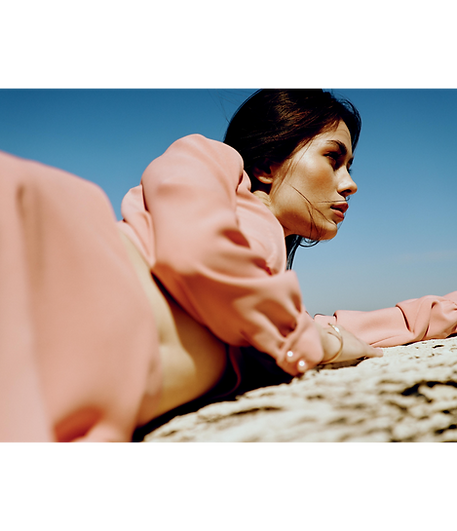Fashion Dancing
with Rhythm









Rhythm in Fashion: Embracing Rhythm in Fashion Design
Fashion is more than just clothing; it is a powerful form of expression that embodies cultures, emotions, and various forms of art. Deeply connected to disciplines like music and dance, fashion merges these elements to create a unique visual language. In this context, I embarked on this project to explore the role of rhythm in fashion design and to illustrate how rhythm can be visualized through clothing.
Fashion and Rhythm: Two Interconnected Forces
Rhythm is a fundamental dynamic present in every aspect of life. It can be found in music, nature, our heartbeats, and even in our daily movements. Considering how rhythm can be materialized in fashion through form, pattern, and movement was a key inspiration for this project.
The strong link between music and fashion has been evident throughout history. Like music, fashion can convey emotions, energy, and identity. Just as a musical composition consists of different rhythms, melodies, and dynamics, fashion incorporates cuts, textures, color contrasts, and patterns to create a similar narrative. The aim of this project is not only to use rhythm as a visual element but also to transform it into a physical experience that can be felt through clothing.
Tracing Rhythm in Fashion Design
There are several ways to capture rhythm in fashion design, including:
Geometric Patterns and Repetitive Forms: Rhythm is inherently repetitive. By incorporating symmetrical or asymmetrical patterns, structured lines, and recurring motifs, a visual rhythm can be achieved.
Cuts and Silhouettes: The movement and flow of garments help to embody rhythm. Fluid fabrics combined with sharp lines can evoke tempo variations, much like shifts in musical rhythm.
Color and Contrast: Different color combinations and tonal transitions create an emotional intensity similar to rhythmic accents in music. Color blocking, gradient shifts, or sudden contrasts help establish a rhythmic flow.
Texture and Material Choice: The juxtaposition of matte and glossy surfaces or soft and rigid textures allows rhythm to be perceived not only visually but also through touch.
This project aims to present rhythm not just as a design element but as an experience in fashion. Clothing should not only be worn but also felt and lived through movement and emotion.
A Personal Journey: Feeling and Expressing Rhythm
This project is not merely an academic endeavor but a personal passion transformed into fashion design. My love for music and dance has made the idea of materializing rhythm through garments even more meaningful. In merging fashion and music, I hope to introduce a fresh perspective that pushes creative boundaries and allows me to explore artistic freedom in a new way.
Conclusion: Experiencing Rhythm Through Fashion
This project serves as an exploration of how rhythm can be visualized in the fashion world. Capturing rhythm in clothing is not just about visual representation but also about creating a multisensory experience that combines movement and emotion. Ultimately, a rhythm-inspired fashion collection will enable individuals to express themselves in a more profound and aesthetic way.
Fashion and music are two powerful artistic forms that shape human perception. In this project, I seek to unite these two realms and discover how they can create a new form of expression. Rhythm in fashion is not merely a collection; it is an art form that allows individuals to experience and embody rhythm through clothing.